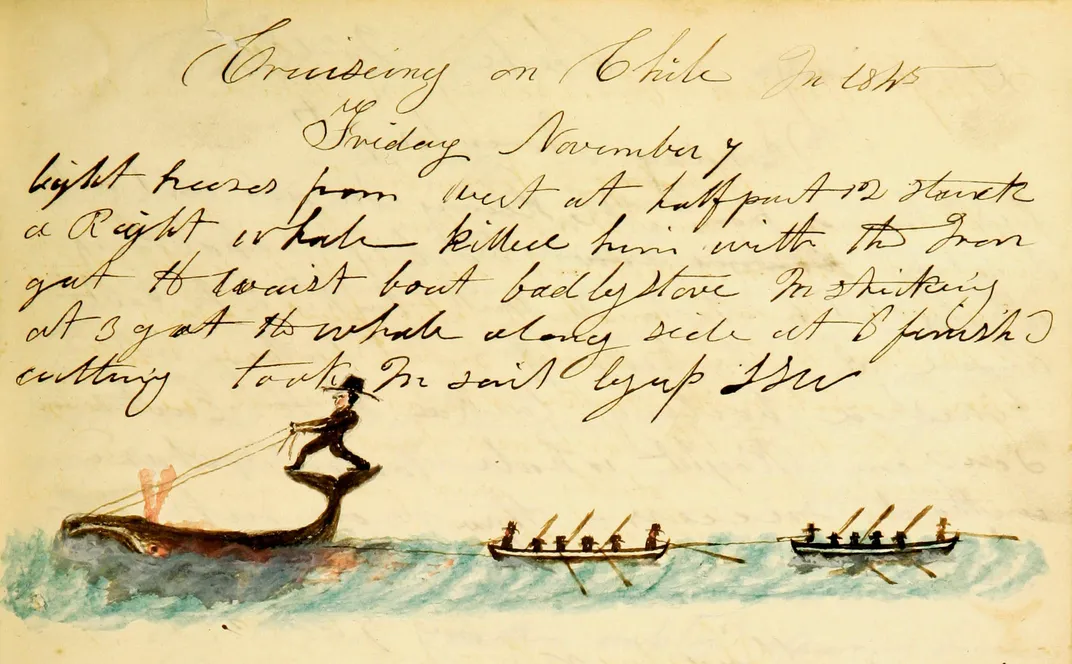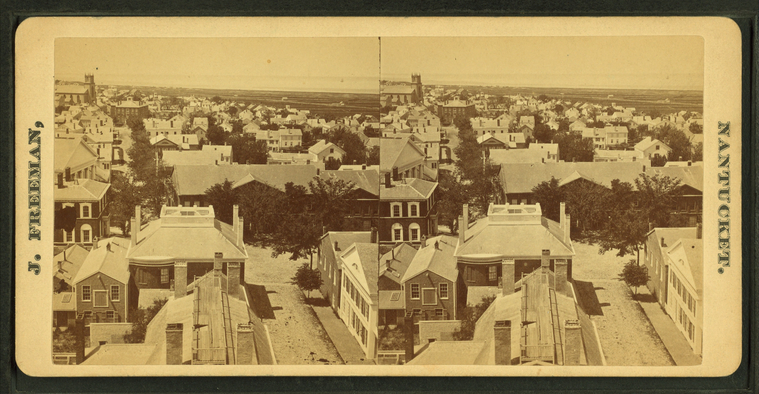
"A drawing from the journal kept by Captain Reuben Russell of the Nantucket whaling ship Susan ". Nantucket Historical Association
Benjamin A. Gardner was born in Nantucket, Massachusetts. He worked on a Whaling Ship for 12 years and on Merchant Ships and Lightships for 33 years. His last place of residence was Brooklyn, New York. Gardner entered Sailors’ Snug Harbor on February 4, 1867, and would remain at the Harbor for three years, dying on September 8, 1870. Benjamin Gardner is buried in Plot 1 of Sailors' Snug Harbor Cemetery.
The Gardner name has a history related to whalers on Nantucket. These whalers were not the Folgers, the Coffin , or Starbuck Quaker families . They were of a different religion but of the same breed of Whalemen. The Gardners shared the same religion as the Indians of Nantucket . They were Congregationalists. One of the first Gardners that was Captain of a Whaling boat was John Gardner (Philbrick, 71). In the last quarter of the 17th century, John Gardner and his brother would engage the governor, that oversaw Nantucket, to rewrite the proprietor land grants on Nantucket. This allowed families that were not a part of the original families that settled Nantucket to have rights to land ownership. Land ownership would allow the Gardners to even the playing field with the Quaker families to continue to prosper in the whaling business (Philbrick, 72).
The Gardner family played a significant role in the early days of whaling on Nantucket. These were the days of along-shore whaling and the taking of the Right whale . The biggest year of along-shore whaling was in 1726. Andrew Gardner took 4 Right whales, Benjamin Gardner 3 Right whales, Peter Gardner 4 Right whales, and Joseph Gardner 1 Right whale. The maximum amount of Right whales taken by any Whale Boat that year was 5 ( Philbrick, 84).
The Nantucket Quaker Whale men eventually turned away from the Right whale to the Sperm whale , but so did the Gardners ( Philbrick, 116). With the development of Portable tryworks and eventually the on-ship tryworks, the Whaling Business of Nantucket became very lucrative.
Here is a poem from Peleg Folger , when he was a young whaleman: "Thou didst, O Lord, create the mighty whale, That wondrous monster of a mighty length; Vast is his head and body, vast his tail, Beyond conception his unmeasured strength. But, everlasting God, thou dost ordain That we, poor feeble mortals should engage (Ourselves, our wives and children to maintain) this dreadful monster with a martial rage" ( Philbrick, 137).

Birds eye-view of Nantucket - New York Public Library Digital Collection.
The Cross-Rip light-ship was well known to those who visited the Nantucket Vineyard in the 19th century (North, 198). Light-ships were anchored along Nantucket sound to warn passing vessels of the dangers.

The Nantucket passage was the only safe route for ships at sea to pass between Northern New England and New York. It became known by the late 19th century as light-ship alley (Leach). Benjamin Gardner had orders to go up and down in gales not to mislead the ship traffic (North , 198). These orders caused Captain Gardner to lose two ships, but all his crew survived ( North, 198).